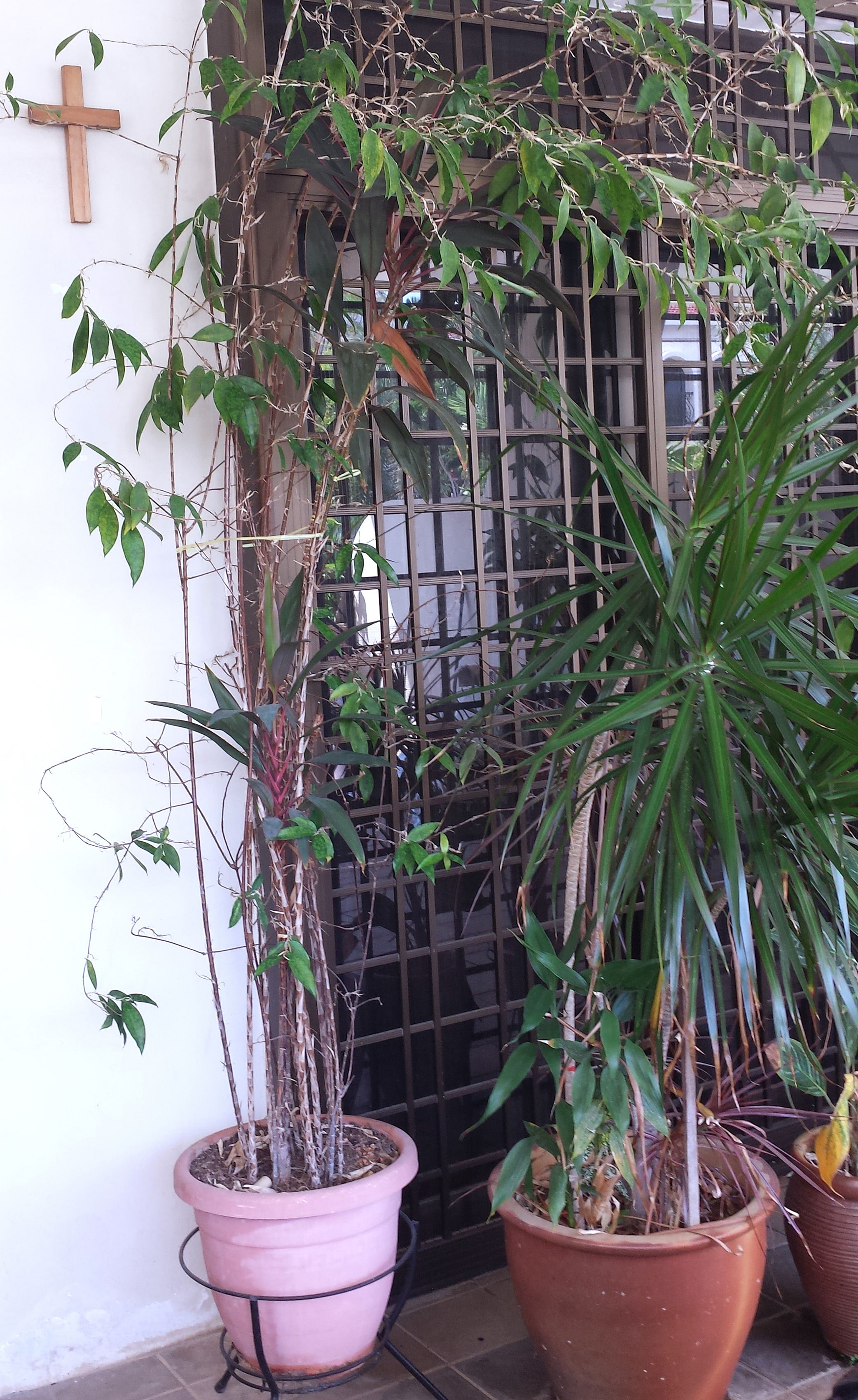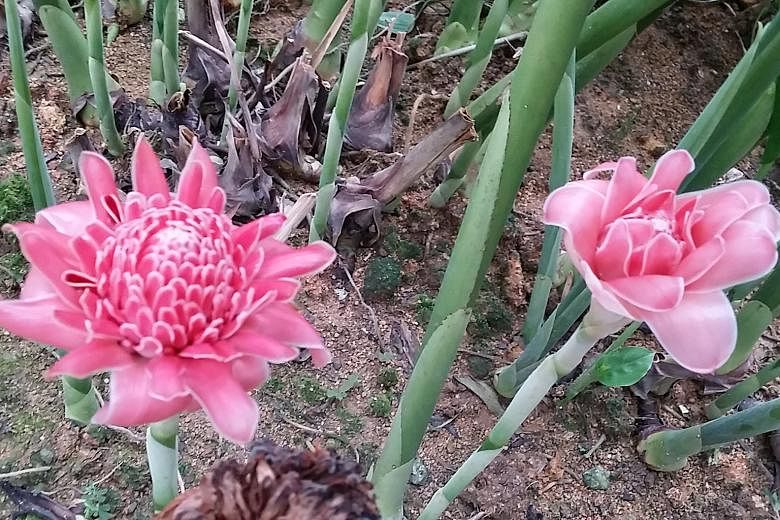Torch ginger used in rojak
I found these plants in a school compound. What are they? The flowers bloom directly from a stalk. Do the plants bear fruit?
Chong Yuen Foong
The plant is commonly called the torch ginger or bunga kantan, a large-growing ginger plant. Its botanical name is Etlingera elatior.
The unopened buds are harvested, shredded thinly and added to flavour Chinese rojak.
Sunbirds are attracted to the flowers and help to pollinate them. A cluster of club-like fruits sometimes forms.
There are varieties that produce white or deep-red inflorescences, besides pink.
Tip: Parasol Palm sought after for its showy leaves
The Parasol Palm (its botanical name is Licuala orbicularis) is a small and slow-growing species.
It is highly sought after for its showy, large and round leaves.
The palm is best grown in shadier conditions where it can get some filtered sunlight.
It must not be exposed to direct sunlight as the leaves will burn.
The environment should be humid and the plant needs to be protected from wind.
More light for dumbcane

I bought this plant (pictured) from the nursery, but its leaves started turning yellow quickly. At first, I thought I had overwatered the plant, but when I checked, the soil was only damp. I live in a Housing Board flat and leave my plants outside where it is windy. Another plant I brought back earlier from the nursery had similar problems.
David Tan
The plant is a type of dumbcane. Its botanical name is Dieffenbachia "Camilla".
A change in the plant's growing conditions could have shocked it, causing the leaves to turn yellow.
Although this plant is often sold as an indoor plant, it is better grown in a brighter location where it can be exposed to at least six hours of filtered sunlight.
In the nursery where it was first grown, light levels are likely to be much higher than its current location.
Under dim light, plants become less healthy and are more prone to diseases. Soil that is moist can stay that way for a prolonged period.
Coupled with lower resistance under dimly lit conditions, your plant can succumb to root or stem rot diseases more easily, leading to rapid decline.
Bamboo plant needs bigger pot

My bamboo plant (pictured) used to have lots of leaves. Small birds would build their nests on it. But it is not growing as well now. What should I do? Can I cut the stem and transplant it into another pot? I also have another plant that I cannot identify. What is it?
Catherine Kuek
It appears that your Japanese Bamboo (Dracaena surculosa) is being grown in an undersized pot. Its roots have filled the pot and nutrients in the soil would have probably been exhausted. Also, its water supply would be limited due to very little soil volume left in the pot.
You can move it into a larger pot with fresh potting mix to allow more space for the roots to grow. During the transplanting process, try to disentangle the roots which may have been circling inside the pot.
After the plant has recovered from the transplanting process - which can take about two weeks - you may want to move it to a brighter area to promote healthier growth.
Although this plant is shade- tolerant, it will do better in a location with some filtered sunlight for at least six hours daily.
Judging only from the leaves of the second plant, it may be a Black Morinda. Its botanical name is Morinda elliptica. This plant may have grown from seeds carried by birds in their droppings.
Shooting Stars Hoya blooms frequently
What is this plant? The flowers are oddly shaped and seem to bloom quite frequently.
Luo Siyun
The plant is called Hoya multiflora and is commonly known as the Shooting Stars Hoya.
Unlike many other hoya species and cultivars, this species grows more like a shrub, with long arching branches that develop over time. It is not a climber.
It is a rewarding plant to grow as it produces waxy flowers frequently.
Grow it in a location where it can get at least six hours of filtered sunlight daily. The media used should be free-draining, but moisture-retentive.
•Answers by Dr Wilson Wong, a certified practising horticulturist and founder of Green Culture Singapore (www.greenculturesg.com). He is also an NParks-certified park manager.
•Have a gardening query? E-mail it with clear, high-resolution pictures of at least 1MB, if any, and your full name to stlife@sph.com.sg






